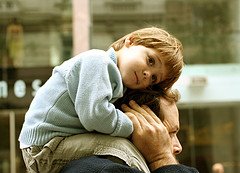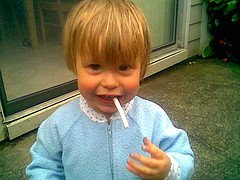Winning the war against colon cancer: we are curing more patients than ever before
Gut wars
Winning the war against colon cancer: we are curing more patients than ever before.
COLON (or large intestines) cancer is one of the most common cancers in the world. It is the third most common cancer found in both Malaysian men and women, with the National Cancer Registry reporting over 1,446 new cases in 2003L
Recent advances in treatment have resulted in more patients living a longer and more productive life compared to a decade ago.
Cancer awareness campaigns and early detection combined with advancements in chemotherapy treatment have increased the likelihood of cure for early-stage colon cancers.
Misconceptions about chemotherapy can deprive a patient of effective treatment. Many are still ignorant about the recent
advancements in the treatment for colon cancer. We really should understand the benefits of additional therapy after surgery, and not be influenced by misconceptions surrounding chemotherapy.
Misconceptions may do harm and could potentially deny patients the possibility of cure.
How colon cancer starts
Colon cancer refers to cancer that forms in the tissue lining of the colon. Unlike most cancers, colon cancer grows slowly, often starting with a tiny non-cancerous growth of tissue known as a "polyp", which may then become cancerous after many years.
Regular screening helps in early detection of polyps, which can be easily removed before they turn cancerous. It may also aid in detectmg cancer still at its early stage. Early detection remains an important step in curing colon cancer.
What are my risks?
Some of us are at higher risk of getting colon cancer than the average population, We need to recoguise these risk factors, which include some of the following:
* Age
The chance of developing colon cancer increases with age, commonly affecting those above 50 years of age.
* Diet
Certain diets may increase the risk of colon cancer, such as one that is rich in red meat (e.g. beef, lamb) and processed meat (e.g, hotdog) and low in vegetables and fruits.
* Family history
Having a close relative with colon cancer increases a person's risk of getting colon cancer, This risk increases further if the dose relative had colon cancer at a young age.
* History of bowel diseases
A history of inflammatory bowel diseases increases a person's chances of getting colon cancer.
Treating colon cancer
Surgery is tile main treatment for colon cancer4, and in early stages, surgery alone will suffice.
However, in patients with highrisk features, a combination of surgery and chemotherapy gives better outcomes.
Chemotherapy given after surgery is known as "adjuvant" treatment.
In this context, chemotherapy is used to mop up microscopic or unseen cancer cells that may still be present in the body, therefore reducing the risk of recurrence. Chemotherapy here serves as extra "insurance" to back up the surgical procedure.
Chemotherapy - emergence of a new era
5-fluorouracil(5-FU) is a chemotherapy agent that has been used for the past few decades in the treatment of colorectal cancers.
Research has shown that adjuvant treatment with 5-FU, given after surgery, will lower the risk of cancer relapsing, compared with no adjuvant treatments. Today, 5-FU is still widely used and is given either through injection into a vein or taken by mouth.
It has taken many decades and years of research to come up with new drugs that are suitable for the treatment of colorectal cancer. Since the late 1990s, significant progress has been made in drug therapies.
in June 2007, the long awaited final results from years of research have confirmed that a two-drug combination of chemotherapy can cure patients with early-stage colon cancer who have high risks features2. These patients call now hope to live longer than ever before2.
This two-drug combination chemotherapy involves the use of 5-FU together with a drug known as oxaliplatin.
In selected patients, such as those with stage Ill colon cancer, oxaliplatin, when added to 5-FU treatment as a two-drug
combination, has been shown to increase the survival rates by as much as 20%, compared with just 5-FU alone2.
Oxaliplatin is a chemotherapy agent that has been approved in Malaysia for the treatment of late-stage (stage IV) colorectal cancer since the late 1990s. Years of research have proven it to be an effective treatment in patients with stage IV diseaseL
And finally today, with intensive research, we call now confirm that oxaliplatin plays a definitive and significant role in the treatment of early-stage colon cancer2.
Into the future
For many years, chemotherapy treatment for early-stage colon
cancer only involved 5-FU. However today, a two drug combination of 5-FU and oxaliplatin has emerged as the new standard of
care for high risk early-stage colon cancer.
Medical research and advancements will continue to propel us forward to search for more effective treatment options for early-stage colon cancer. Researchers are now carrying nut investigations on three-drug combination treatments, using 5-FU, oxaliplatin and biologic agents (cetUximab or bevacizumaby. We await with optimism on the results of these studies.
We hope to cushion offthe breaking of bad news to colon cancer patients with an even more optimistic message of better cure rates and survival in the near future.
The war against colon cancer is far from over. However, the future looks optimistic.
References:
1.2rid Report of the National Cancer Registry - cancer incidence in Malaysia 2003
2. de Gramont et al. Final results of MOSAIC presentation. ASCO 2007
3. American Society of Cancer, http://www.cancer.org. Accessed on 5th April 2008
4. National Comprehensive Cancer Network ( NCCN ). Colon and rectal cancer - treatment guidelines for patients. Version V/October 2007. 5. O'Connell MJ, et al.J Clin Oncol 1997;15:246-50
6. www.bpflcgov.my
7. de Gramont et aI. J Clin Onco1 2000; 18:2938-2947
8. de Gramont et al. Semin Oncol 33(suppl 11) : $42-45
Labels: Cancer




